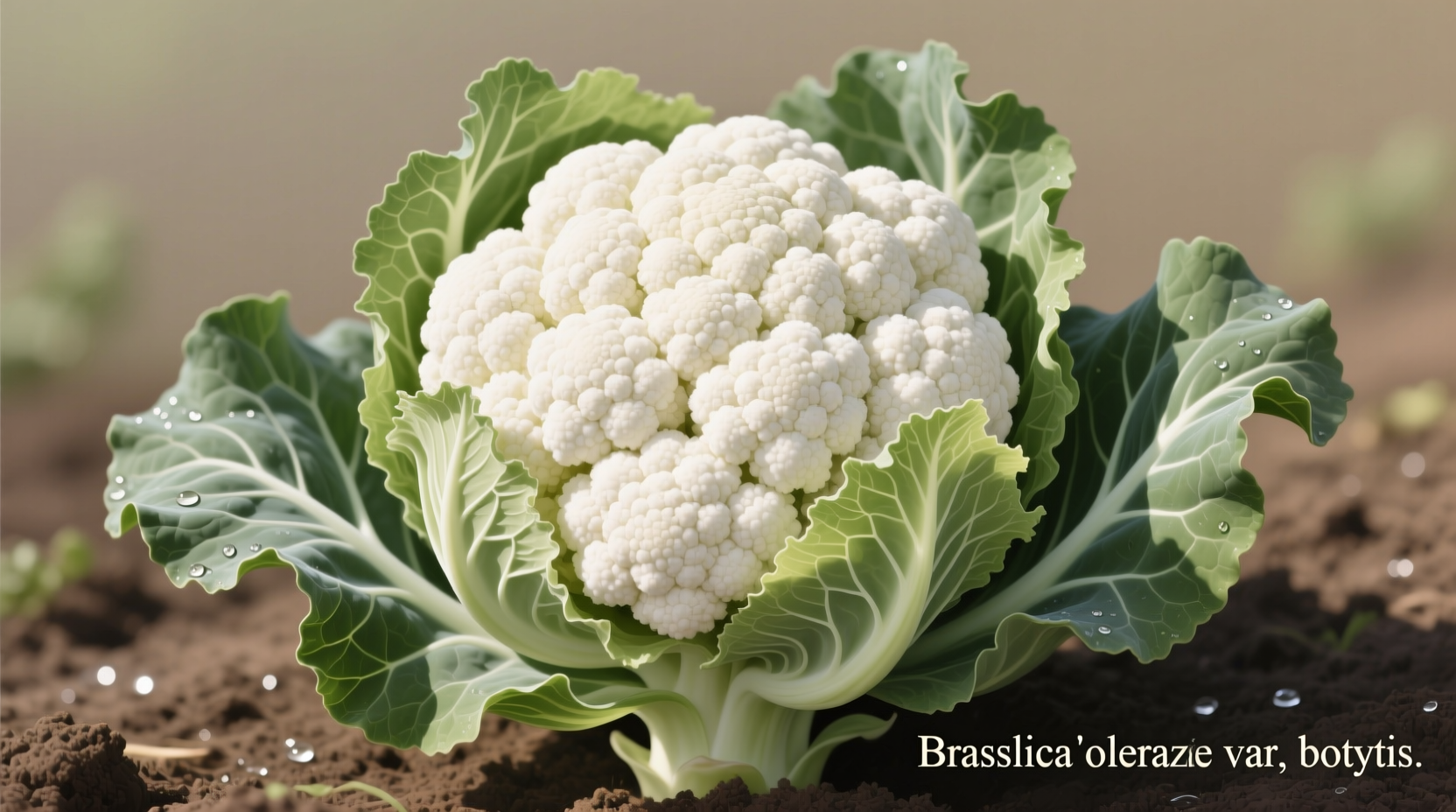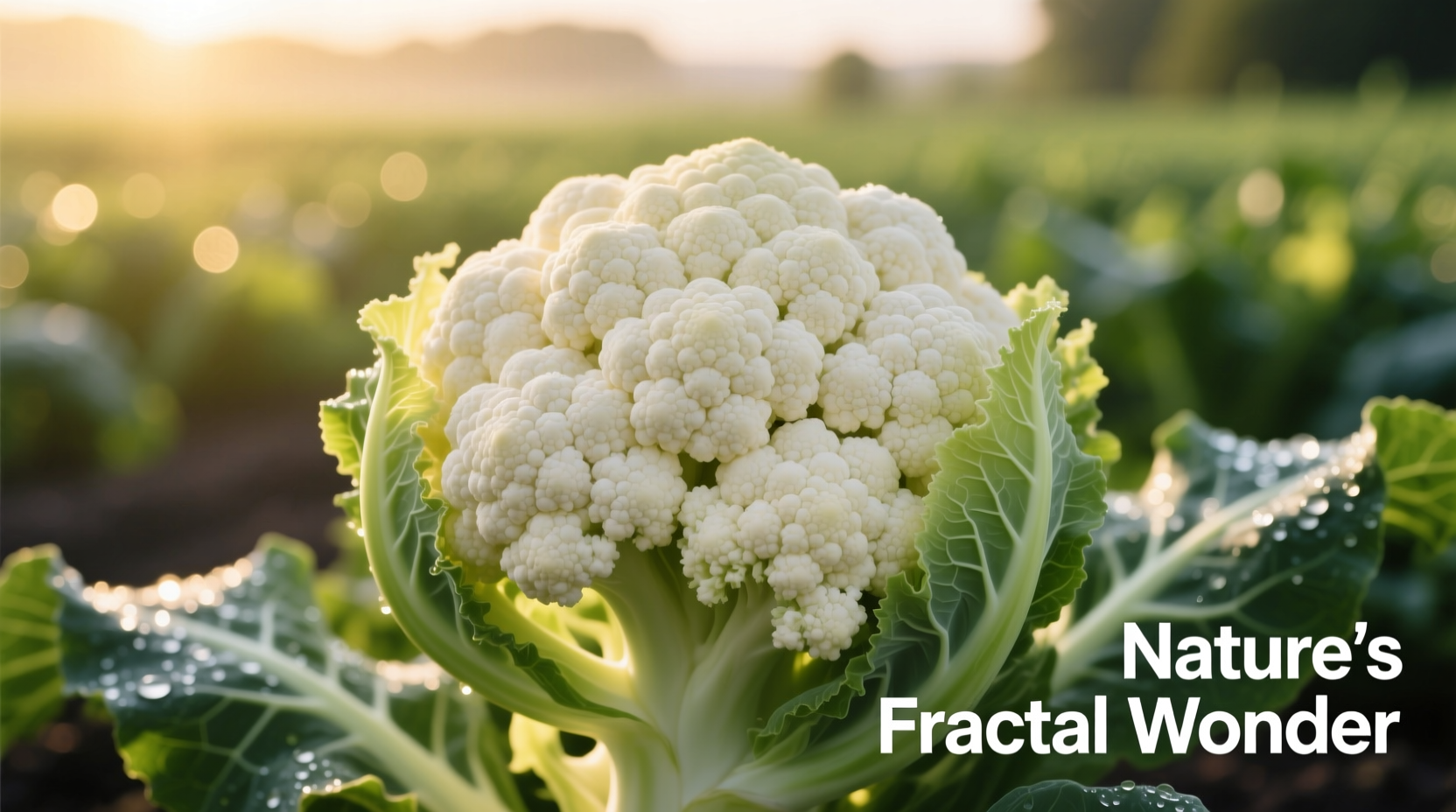Understanding Cauliflower Growth Stages: A Complete Timeline
Successful cauliflower cultivation depends on understanding its distinct growth phases. Unlike many vegetables, cauliflower has narrow temperature tolerances that directly impact head formation. Let's examine the complete growth journey:
| Growth Stage | Duration | Critical Requirements | Visual Indicators |
|---|---|---|---|
| Germination | 5-10 days | Soil temp 70-80°F, consistent moisture | Seedlings emerge with two cotyledon leaves |
| Vegetative Growth | 3-4 weeks | Nitrogen-rich soil, 1-1.5" water weekly | 6-8 true leaves develop, strong root system forms |
| Head Initiation | 7-10 days | Cool temps (60-65°F), balanced nutrients | Small white curd appears in center of leaves |
| Head Development | 10-20 days | Consistent moisture, protection from sun | Curd expands to 6-8" diameter, remains tight |
| Harvest Ready | 1-2 days window | No immediate requirements | Firm, compact head with smooth surface |
This timeline, verified by University of Minnesota Extension, shows why cauliflower demands precise attention. The head development phase is particularly vulnerable to temperature fluctuations that cause riciness (grainy texture) or buttoning (tiny premature heads).
Creating the Perfect Growing Environment
Before planting, assess these critical factors that determine cauliflower success:
Soil Preparation Essentials
Cauliflower thrives in deeply worked, fertile soil with excellent drainage. Prepare your garden bed 2-3 weeks before planting:
- Incorporate 3-4 inches of compost or well-rotted manure
- Maintain soil pH between 6.0-7.0 (test with kit from garden center)
- Add balanced organic fertilizer (10-10-10) at 2 lbs per 100 sq ft
- Ensure soil temperature reaches at least 50°F before transplanting
According to UC Agriculture and Natural Resources, cauliflower's shallow root system requires consistent soil conditions. Raised beds (8-12" high) improve drainage in heavy soils and warm faster in spring.
Climate Considerations and Timing
Cauliflower is a cool-season crop with specific temperature requirements:
- Ideal growing temperature: 55-75°F
- Head formation fails above 80°F (causes premature flowering)
- Frost tolerance: Survives light frosts but not hard freezes
- Spring planting: Transplant 4-6 weeks before last frost
- Fall planting: Sow seeds 8-10 weeks before first frost

Planting Techniques for Optimal Growth
Whether starting from seed or transplants, proper planting technique sets the foundation for healthy cauliflower growth.
Seed Starting Guide
For best results, start seeds indoors 4-6 weeks before transplanting:
- Use seed starting mix in individual cells (2-3 seeds per cell)
- Maintain soil temperature at 70-80°F until germination
- Provide 14-16 hours of light daily after sprouting
- Thin to strongest seedling when first true leaves appear
- Begin hardening off 7-10 days before transplanting
Transplanting Best Practices
Transplanting requires careful handling to prevent stunting:
- Space plants 18-24" apart in rows 24-36" apart
- Plant at same depth as in container (don't bury stem)
- Water thoroughly after planting with liquid seaweed solution
- Apply 2-3" mulch layer to maintain consistent soil moisture
- Consider using row covers to protect young plants
Research from USDA Agricultural Research Service shows that proper spacing prevents competition for nutrients and improves air circulation, reducing disease risk.
Essential Care During Growth
Daily attention during the growing season makes the difference between thriving plants and disappointing results.
Water Management Strategies
Cauliflower requires consistent moisture without waterlogging:
- Provide 1-1.5 inches of water weekly (more during dry spells)
- Water deeply 2-3 times weekly rather than daily light watering
- Morning watering reduces disease risk compared to evening
- Drip irrigation maintains consistent soil moisture better than sprinklers
- Check soil moisture 2" below surface before watering
Inconsistent watering is the leading cause of hollow stem, a common cauliflower disorder where the stem develops empty spaces. This condition, documented by Penn State Extension, results from rapid growth followed by moisture stress.
Nutrient Requirements and Fertilization
Cauliflower is a heavy feeder with specific nutrient needs:
- Apply balanced fertilizer when plants have 4-5 true leaves
- Side-dress with nitrogen-rich fertilizer (blood meal or fish emulsion) 3-4 weeks after transplanting
- Maintain consistent boron levels (deficiency causes brown spots in curds)
- Avoid excessive nitrogen during head formation (causes leafy growth)
- Test soil mid-season if growth appears stunted
Harvesting at the Perfect Moment
Timing your harvest correctly ensures the best quality and flavor:
- Harvest when heads reach 6-8" diameter and remain tight
- Check daily during peak maturity period (growth accelerates quickly)
- Heads should feel firm and heavy for their size
- Cut with 1-2" of leaves attached to protect the curd
- Harvest in morning when temperatures are coolest
Waiting too long causes the head to become ricy (grainy texture) or start flowering. According to Cornell University's vegetable growing guide, cauliflower heads that show any separation between florets have passed their prime quality.
Troubleshooting Common Growth Problems
Even with proper care, cauliflower can develop issues. Here's how to identify and address the most frequent problems:
Buttoning: Premature Small Heads
Symptoms: Tiny, marble-sized heads form instead of full-sized curds
Causes: Temperature stress (below 50°F), transplant shock, nutrient deficiency
Solution: Start seeds later in spring, harden off plants properly, ensure adequate phosphorus
Ricing: Grainy Texture Development
Symptoms: Individual florets elongate and become grainy
Causes: High temperatures (above 80°F), inconsistent watering
Solution: Harvest earlier, provide afternoon shade, maintain consistent moisture
Leaf Yellowing and Stunted Growth
Symptoms: Older leaves turn yellow, overall growth slows
Causes: Nitrogen deficiency, root-bound plants, compacted soil
Solution: Apply balanced fertilizer, loosen soil around plants, ensure proper spacing
Brown Spots in Curds
Symptoms: Brown or black spots develop within the head
Causes: Boron deficiency, sunscald, fungal infection
Solution: Apply boron supplement, blanch heads by tying leaves, improve air circulation
Season Extension Techniques
Extend your cauliflower growing season with these proven methods:
- Spring planting: Use black plastic mulch to warm soil 2-3 weeks earlier
- Fall planting: Choose varieties with 50-60 day maturity for reliable harvests
- Cold protection: Use floating row covers when temperatures drop below 40°F
- Heat protection: Provide 30-50% shade cloth during summer heat waves
- Succession planting: Sow new seeds every 2-3 weeks for continuous harvest
For gardeners in warmer climates, University of Florida IFAS Extension recommends fall planting with heat-tolerant varieties like 'Snow Crown' or 'Graffiti' for best results.
FAQ: Cauliflower Growth Questions Answered
Here are answers to the most frequently asked questions about cauliflower cultivation:











 浙公网安备
33010002000092号
浙公网安备
33010002000092号 浙B2-20120091-4
浙B2-20120091-4